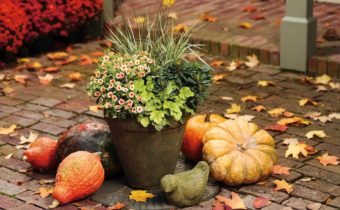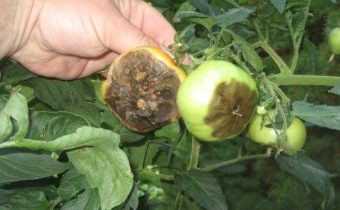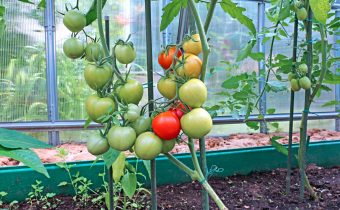What is the best way to garter a tomato?
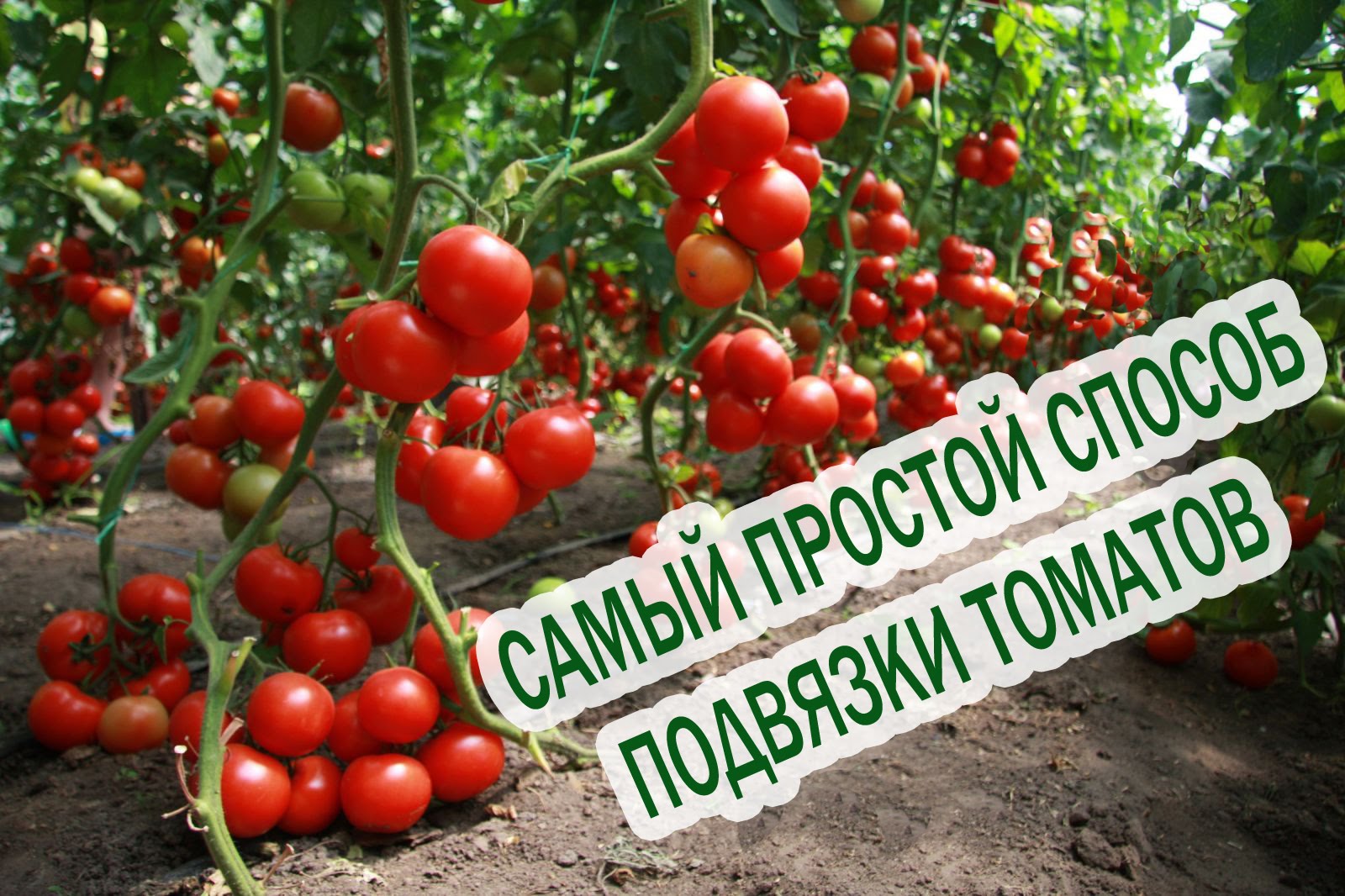
Tomatoes can be bought in the store, but not everyone is happy with the taste and prices. Well, about the environmental performance of such products can not speak. Therefore, many people prefer to grow vegetables on their own. And in order for the work to be invested not to be in vain, it is necessary to take into account the peculiarities of growing each crop.
In the case of tomatoes, it all starts with the choice of variety. Considering the climatic zone and natural conditions, the species that are most resistant to drought are selected, top rot or lesions of the fungus and viruses. In terms of taste, domestic counterparts benefit compared with foreign ones.
Why do you need to tie up tomatoes
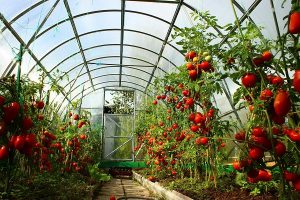 To obtain high yields of tomatoes with excellent taste, it is most advantageous to plant tall varieties with large fruits. In such cases, if you do not take care of the garter in advance, the losses will be significant - the branches may break under the weight of the fruit or grow weak and prevent the tomatoes from fully forming.
To obtain high yields of tomatoes with excellent taste, it is most advantageous to plant tall varieties with large fruits. In such cases, if you do not take care of the garter in advance, the losses will be significant - the branches may break under the weight of the fruit or grow weak and prevent the tomatoes from fully forming.
Besides when watering the stream should be directed at the root and ensure that moisture does not fall on the stems or on the ovary. If this is neglected, the risk of disease and parasite damage increases significantly. To avoid unpleasant consequences and get a decent crop, you need to prepare in advance for the growth of the tops and in time to tie up the stems of a growing bush.
What to use for tying a tomato
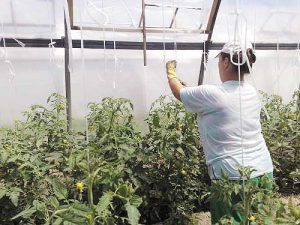 Most often used stakes and ropes - this is the simplest option that does not require serious expenditure and time. It all depends on the area of planting, variety and personal situation. Sometimes not only purchased twine and twine are used, but also straps, ribbons, laces, old stockings and tights. The main thing that the material was not too tight and did not cause serious deformation of the stems. Near each bush is driven in
Most often used stakes and ropes - this is the simplest option that does not require serious expenditure and time. It all depends on the area of planting, variety and personal situation. Sometimes not only purchased twine and twine are used, but also straps, ribbons, laces, old stockings and tights. The main thing that the material was not too tight and did not cause serious deformation of the stems. Near each bush is driven in
For those who are accustomed to everything to approach with all seriousness, suitable trellis. This is a series of stakes between which a wire or a completely metal frame is stretched. Stakes can be wooden, metal, plastic. They are stretched horizontally wire with a distance of 45 cm between the rows.
count and as the plant grows it is tied up at the top level.
Important!
Sometimes it is better not to use everything that comes to hand. Thin wire, fishing line and too narrow a rope is not suitable for tying. They can cause injury or pinch the trunk and branches. You should also carefully use the stakes and garters left over from last year to exclude risk of infection. If there are no other options at all, be sure to treat them with an antiseptic.
Binding options:
Trellis cultivation
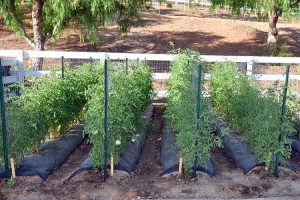 This method is well suited for large areas and tall varieties. Tapestries collect a variety of configurations - from metal, wooden stakes and even bamboo poles. This is usually a cumbersome design, requiring materials and installation time. But the probability high yield and a reduction in the incidence of disease is more than worth the trouble of installation.
This method is well suited for large areas and tall varieties. Tapestries collect a variety of configurations - from metal, wooden stakes and even bamboo poles. This is usually a cumbersome design, requiring materials and installation time. But the probability high yield and a reduction in the incidence of disease is more than worth the trouble of installation.
The simplest option is stakes or pipes hammered into the ground at different ends of the bed and the wire or cross-member stretched between them. If the row is longer than 5 meters, it means that intermediate ends are driven in between the end supports, approximately at a distance of 4 m. The height depends on which variety will grow, if it is medium-tall, 1.2-1.5 meters is enough, for tall tomatoes it is already necessary provide 2.5 m and above.
The design can be the most common - at right angles or oblique V, A, or X shaped. Usually wooden or bamboo columns are used to create curly ones, and metal ones are also well suited for rectangular ones.
To fasten the branches, they stretch the wire between the supports on top and in several rows horizontally, at a distance of about 40 cm from each other. The bush is tied with string and fastened on the cross bar on top. You should not use the tip for this, it is better to fix the lower end in the middle or at the base of the bush so that as the plant grows it will not break.
What is the benefit?
- free movement between rows;
- good air circulation and the absence of excess moisture on the leaves, fruits and stems, which reduces the risk of infections and parasites;
- Harvesting convenience.
Free loop method
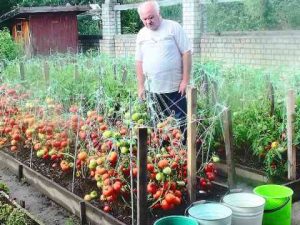 Suitable for both greenhouses and open ground. In the first case, in addition to the twine, you may not need additional materials, since you can use the frame of the greenhouse construction for the supports. If several rows are planted, and there are few cross strips, it is possible to still stretch the wire, which can also be tied up with bushes.
Suitable for both greenhouses and open ground. In the first case, in addition to the twine, you may not need additional materials, since you can use the frame of the greenhouse construction for the supports. If several rows are planted, and there are few cross strips, it is possible to still stretch the wire, which can also be tied up with bushes.
For open areas, a frame should be created in order to be able to attach the rope from above using the free loop method. These can be stakes on the sides and a transversely stretched wire between them at the highest point, in order to be able to secure the upper end of the string or string. The lower end is attached around the stem closer to the base or middle, but not near the top.
The structure can be very different - from wood, plastic, metal, bamboo sticks, using twine or wire. The main thing that the garter was carried out by the method of a free loop, which allows for good tension and ease of regulation as the tomato bush grows. In this case, horizontal supporting guides are not required, one twine, stretched vertically and fixed on both sides, is enough.
Good simplicity and accessibility, because it does not require large expenditures on materials and complex devices and structures.
More available can be viewed in the video.
On the grid
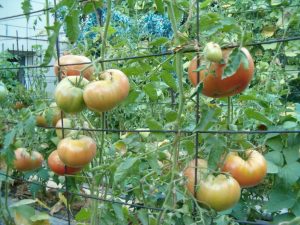 The grid can be from a variety of materials - metal, plastic, wire, rope, and sometimes wooden bars. The main point is to ensure that the area of support is as large as possible and allow each branch to be fixed. Very similar to the trellis, but unlike the trellis method, the mesh cells are smaller than the distance between the crossbars. Often the grid is bought ready-made and installed on the site. Sometimes the grid can be soft and cut into small pieces under each bush, if they do not grow very wide and planted not too close.
The grid can be from a variety of materials - metal, plastic, wire, rope, and sometimes wooden bars. The main point is to ensure that the area of support is as large as possible and allow each branch to be fixed. Very similar to the trellis, but unlike the trellis method, the mesh cells are smaller than the distance between the crossbars. Often the grid is bought ready-made and installed on the site. Sometimes the grid can be soft and cut into small pieces under each bush, if they do not grow very wide and planted not too close.
Wire frame
In contrast to the previous version, the wire frame is installed on each bush separately, and not on the whole row. A flexible net is wrapped around each bush and gradually wrapped around new shoots as it forms. It turns out a kind of "house" or a cell, inside which tomatoes ripen. Quite an expensive way and is hardly suitable for large farms.
Linear mount
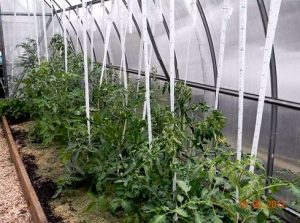 It looks like a tapestry, but in the case of a linear attachment between the vertical stacks at the ends, they are not driven in extra. Ropes or strips of fabric are tied with one end to the base of the bush, and the other to the rope above.The undoubted advantage is that as the plant grows it will no longer need to be adjusted and re-tied, it is important only to twist around the new shoots around the rope in time. You should not use this option for tall varieties with large fruits.
It looks like a tapestry, but in the case of a linear attachment between the vertical stacks at the ends, they are not driven in extra. Ropes or strips of fabric are tied with one end to the base of the bush, and the other to the rope above.The undoubted advantage is that as the plant grows it will no longer need to be adjusted and re-tied, it is important only to twist around the new shoots around the rope in time. You should not use this option for tall varieties with large fruits.
To individual support
You can not build complex structures, some will like the easy way, where they use stakes that are driven in near each bush. As a garter, flaps of fabric, yarn, twine, or rope can be used. The height of the stakes should be chosen slightly higher than the expected growth of approximately 20-25 cm.
With all the simplicity and availability, it is important to observe precautions - wooden supports are used only once, and materials that can be washed or treated with an antiseptic must be processed before the next use. So the possibility of infection last year's lesions is reduced to a minimum.
Frequent mistakes when tying a tomato
- too tight loops when tying can hurt the stems and affect the development of the bush;
- incorrectly chosen method reduces the yield and adds unnecessary trouble;
- neglect of security measures;
- The use of last year’s materials leads to the development of diseases.
Tomato Garter Tips
If you decide to tie up tomatoes, then it is better to prepare in advance, and not to establish supports between the already formed plants. In most cases, regular garter correction is necessary along with the growth of shoots, otherwise breaking of branches and growth may occur. It is important to ensure that the stepchildren do not develop strongly and remove them as they appear.
It is necessary to tie up tall varieties growing in greenhouses. Midsummer and undersized in the open ground can sometimes not be tied up, especially if they grow in the southern regions where it rarely rains.


